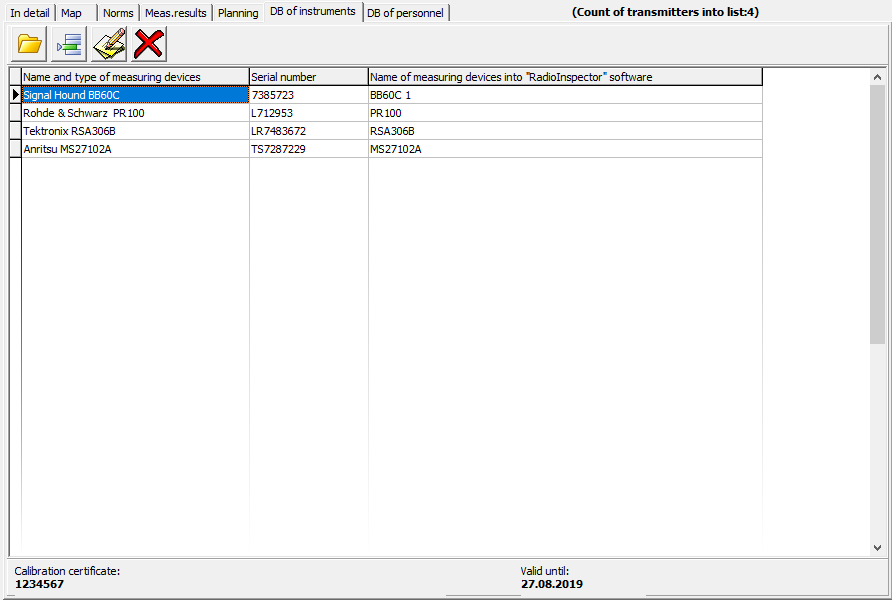Advanced Frequencies Database
Spectrum Intelligence and Operational Data Management SystemThe advanced frequencies database is another extension of RadioInspector’s class leading, spectrum data recording, storage and post analysis capability and compliments its full spectrum trace (scan) and panorama databases as well as detected signal list and audio file databases.
The advanced database consists of multiple specialized databases together in a single program that are dynamically linked for storage, analysis and management of extensive, detailed RF signal and operational data and was designed for advanced professional applications.
RadioInspector’s advanced frequencies database includes the following individual databases:
- Authorized frequency database
- Standards Database
- Measurement results database
- Database for task planning and automation
- Database of measuring instruments
- Personnel database
Authorized Frequencies Database
The authorized frequencies database is a list of frequencies programmed by the operator which can be added directly from any of the spectrum analysis GUI’s, as well as from any list of detected signals generated during data collection. Frequencies can also be added manually, and all information edited at anytime from within the database. Multiple authorized frequency database files can be created and maintained for specific facility locations, geographic regions, operational tasks or other objectives as required.
Operators can utilize an integrated filter, which includes a geographic filter option, to search for specific frequencies saved within the database, which is particularly useful when large amounts of data have been stored. Each frequency from the authorized database list is linked to the geographic, standards and advanced parameter measurement databases, and displays the frequency with all associated collected data.
The first database tab displays programmed signal details for both the transmitter and transmitting antenna, if so programmed by the operator.
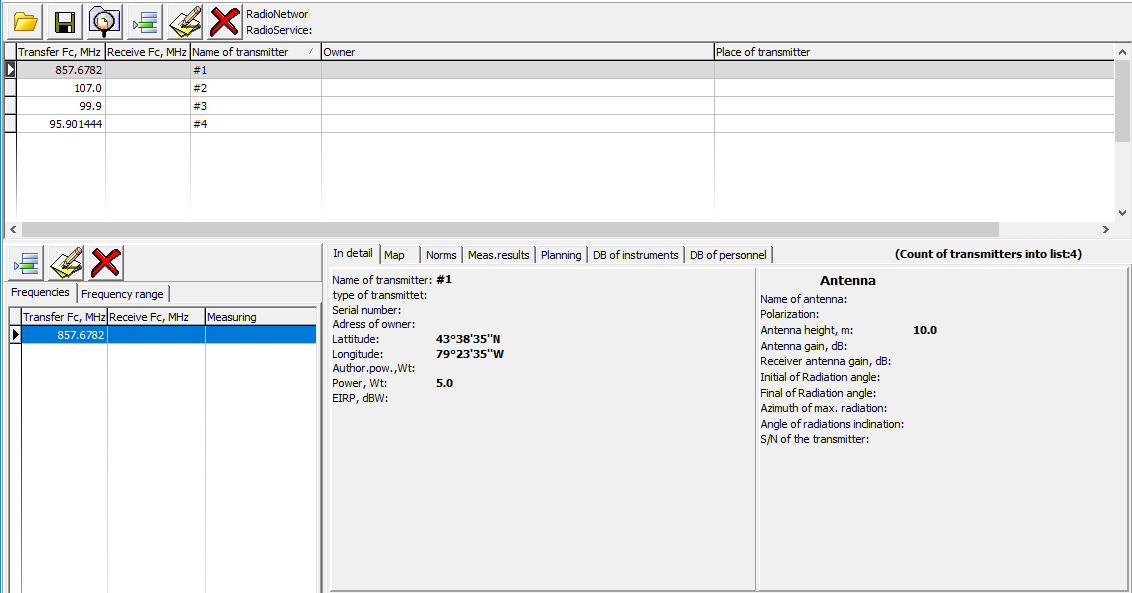
Geographic Information Support System Database
The ‘Map’ section displays the digital map and the Geo-spatial data collected by the geographic information support system for each signal, if a GPS receiver was utilized. It also provides many of the Geo system features including display, print, reporting and graphic image file storing options, which can be applied directly from within the database.
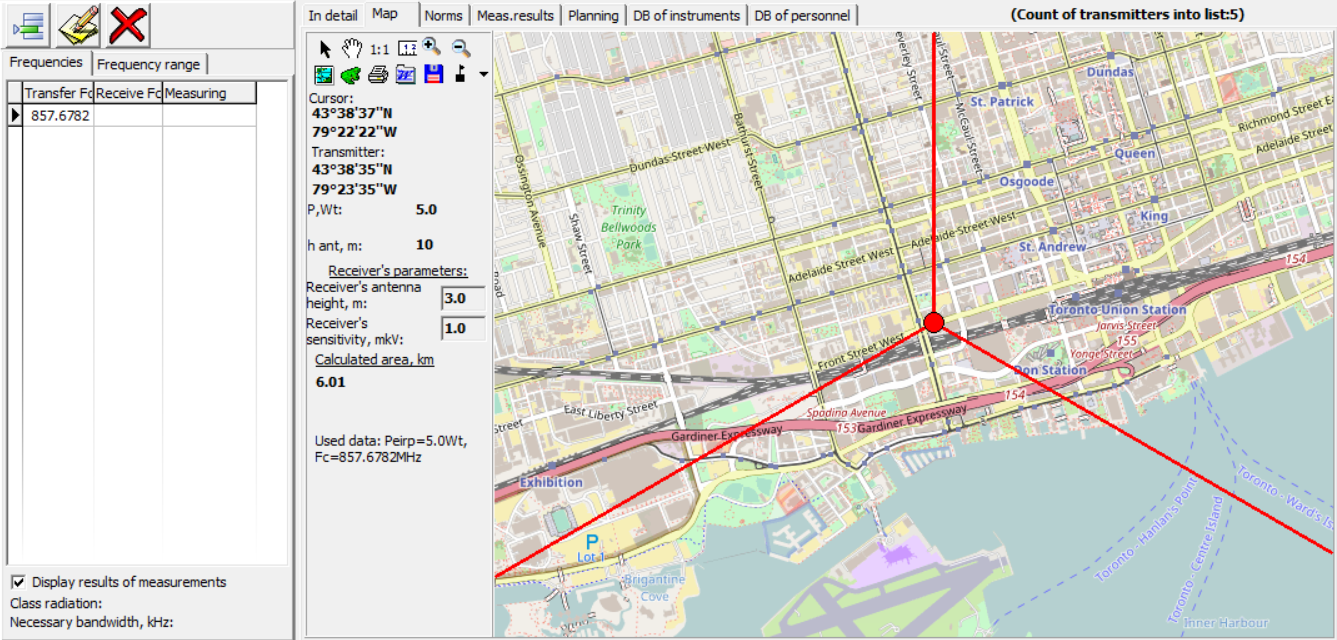
Norms or Standards Database
The ‘Norms’ (restrictive lines) database is used to store signal parameter boundary limits or restrictions for spectrum management, regulatory compliance and telecom applications as well as signal parameter mapping and identification etc. The restrictions or limitations are programmed by the operator and include multiple amplitude and bandwidth levels, measurement algorithm settings, selected measurement method settings, receiver (device) and frequency offset settings. Each file or record is saved to the standards database and the operator can assign or link a particular file (restriction) to individual frequencies from the authorized frequencies database. An unlimited number of restriction files can be created and stored. A built in filter allows searching the database for a specific programmed Standards file.
Files can be loaded and applied to frequencies for measuring bandwidth and out of band radiators with the RF analysis and performance measurement subsystem, with results saved to the performance measurement section of the database.
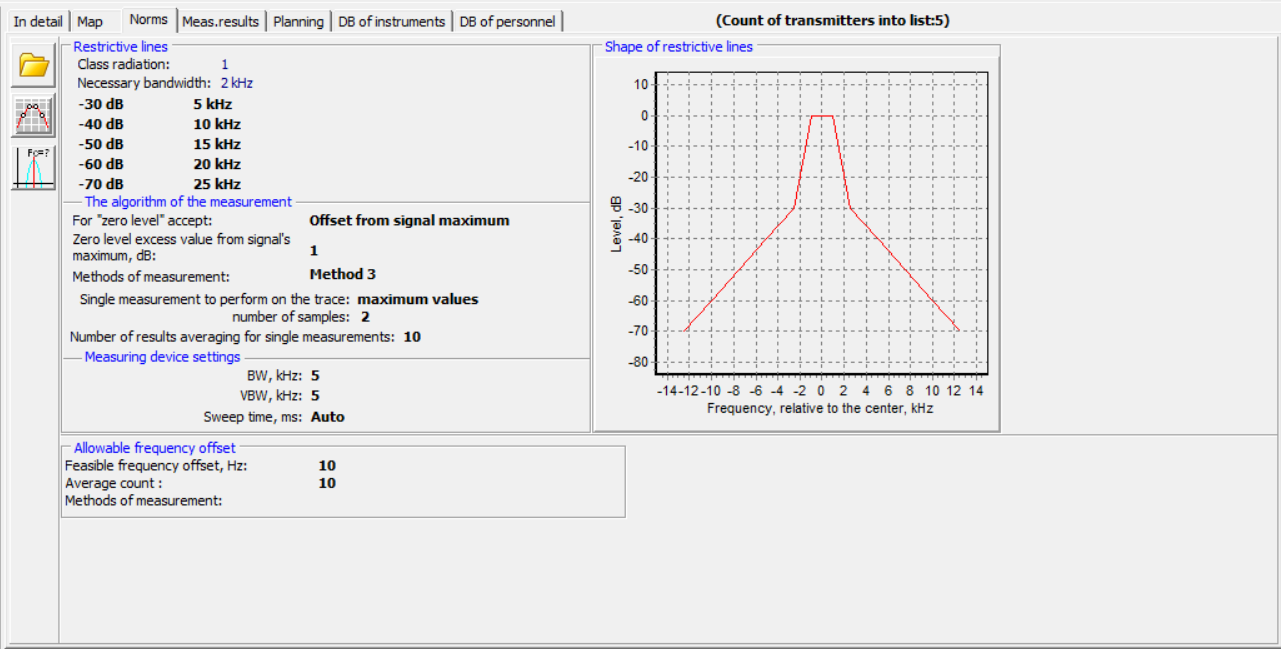
Note: Professional spectrum management and regulatory compliance applications require metrologically accurate measurements. For these specific applications the RadioInspector RC program is recommended. RadioInspector RC was designed to provide metrological measurement support and integrates antenna calibration data when calculating measurement results and accounts for antenna gain/loss factors, intermediate transmission line losses and instrumental inaccuracies.
Performance Measurement Results Database
The performance measurement results database stores and displays the advanced signal parameter measurement results performed by the Signal analysis and Performance Measurement Subsystem, including common data (transmitter, frequency, power, antenna, location and operational information), measuring bandwidth and out-of-band emissions, frequency employment, playback and analysis of recorded demodulated audio files, field strength and signal level measurements, occupied frequency bandwidth, signal parameter estimation measurements and upcoming direction finding and DVB measurements. Multiple selected measurement result records for a specific frequency from the database can also be merged to form a single record. The date and time along with Symbols are displayed for each selected frequency to indicate the types of measurement performed and data recorded. A spectrum graph can also be displayed with associated data for selected parameter measurements.

The database contains, and can display all signals where performance measurement subsystem data was collected, even if the signal was not added to the authorized frequencies database, and has its own extensive and detailed signal search filter.
Each frequency database file can be saved in XML format and a report can be created as a Microsoft Word document.
RadioInspector RP post processing program: The Advanced Frequencies Database option can also be added to the RadioInspector RP post processing program, and results from signal parameter estimation, occupied frequency bandwidth, field strength and frequency employment measurements performed during post analysis, can be saved to the performance measurement results database.
Task Planning Database
With Automatic Task Execution and Autonomous Data Collection
The task planning database provides options to create mission specific operational frequency scanning tasks that can be carried out manually, or set to run automatically, with all spectrum data for each task saved into the main spectrum trace and panoramas database.
An unlimited number of spectrum scanning or discrete frequency tasks with all scanning parameters can be created from the main GUI, or by using any previously saved spectrum scan file. The operator can then program start/stop times and dates as well as operational data including specific locations, personnel, equipment and objectives etc. Each operational task is stored and can be executed automatically with all data collected autonomously, requiring no operator input or intervention. Tasks can be edited at anytime onsite or remotely as required and data can be stored locally or streamed to a remote computer. Once again, a separate detailed search filter is included for accessing specific stored operational tasks.
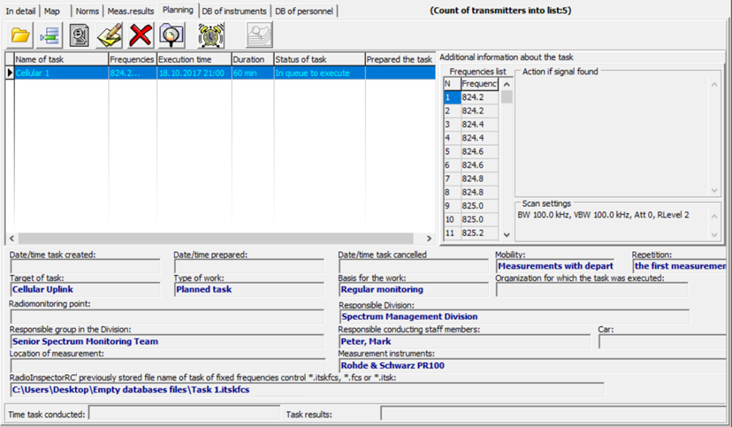
Instrument and Personnel Databases
The instrument database provides records of receivers, spectrum analyzers and software defined radio (SDR) instruments with model/type, serial numbers and calibration certificate information. The personnel database provides a record of operational personnel with full names and positions. Both instrument and personnel databases are linked to the task planning database.
The instrument used during data collection is also automatically recorded and linked to files in the performance measurement database as well as to each stored scanning or sweep file. This allows operators to search previously stored data files within the spectrum trace (scan) and panorama databases, based on a specific receiver, spectrum analyzer or SDR instrument.
